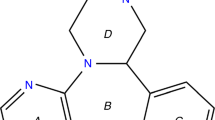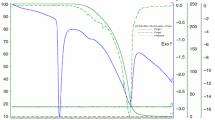Attention is drawn to a contradiction associated with assessments of the compatibility of medicinal (MS) and excipient (ES) substances: that ES and MS able to react with each other chemically are regarded as incompatible, yet at the same time, the compositions of several original medicines include ES and MS which are able to undergo chemical interactions. To remove this contradiction, the concept of “potential incompatibility” of ES and MS is introduced, i.e., the ability of substances to undergo direct or indirect chemical or undesirable physical interactions which may potentially become apparent during the manufacture or storage of a medicinal formulation and influence its quality. It is emphasized that incompatibility between an ES and an MS can be regarded as existing only when it is not possible to ensure their compatibility in a medicinal formulation. Approaches to assessing the compatibility between ES and MS are discussed: stress experiments using chromatographic analysis methods; stress experiments using spectral analysis methods; experiments using thermal analysis methods and calorimetry. A systematic “step-by-step” approach to studying the compatibility between ES and MS is proposed, based on express testing of the interaction between ES and MS not only in model mixtures, but also in samples of the medicinal formulation under development. This has decisive value for drawing reliable conclusions regarding the compatibility between the ES and the MS. Known types of potentially incompatible substance important for predicting potential incompatibility between ES and MS based on the structural characteristics and chemical properties of the molecules are presented. Recommendations are made in relation to studies of the compatibility of ES and MS.

Similar content being viewed by others
Notes
Examples of indirect ES-MS interactions include catalysis of hydrolysis or oxidation of the MS in the presence of an ES containing certain metal ions.
Here and henceforth – compatibility of the MS-ES, ES-ES, and MS-MS types.
For medicinal formulations which have to be stored at low temperature, experiments at low temperatures must also be carried out, in order to monitor the possibility that this will have adverse influences: crystallization, irreversible structural changes, etc.
Actual DSC instruments measure heat flows rather than temperature differences.
DSC peaks associated with polymorphous transitions and easily fusible eutectic mixtures can be identified by thermomicroscopy.
For greater reliability, the spectra of the peaks of interest should also be compared.
Organic acids are generally added to MF to increase MS solubility or to stabilize MS molecules which are salts of the corresponding organic acids.
References
ICH M4Q. Implementation Working Group Questions & Answers (R1) (2003); http: //www.ich.org/fileadmin/PublicWeb Site/ICH Products/CTD/M4 R1 Quality/M4 Quality Questions Answers R1.pdf.
S. S. Bharate, S. B. Bharate, and A. N. Bajajc, J. Excipients Food Chem., 1(3), 3 – 26 (2010).
A. S. Antipas and M. S. Landis, Solid-State Excipient Compatibility Testing in Pharmaceutical Stress Testing: Predicting Drug Degradation, S. W. Baertschi, K. M. Alsante, R. A. Reed (ed.), Informa healthcare, New York (2011), 2nd edition, pp. 419 – 458.
Renu Chadha and Swati Bhandari, J. Pharm. Biomed. Anal., 87, 82 – 97 (2014).
M. Szalka, J. Lubczak, D. Narog, et al., Eur. J. Pharm. Sci., 59, 1 – 11 (2014).
M. C. Adeyeye, Drug-Excipient Interaction Occurrences During Solid Dosage Form Development in Preformulation in Solid Dosage Form Development, M. C. Adeyeye and H. G. Brittain (eds.), Informa Healthcare, New York (2008), pp. 357 – 436.
H. G. Brittain, Methodology for the Evaluation of Chemical and Physical Interactions Between Drug Substances and Excipients in Solid Dosage Form Development, M. C. Adeyeye and H. G. Brittain (eds.), Informa Healthcare, New York (2008), pp. 437 – 476.
Deliang Zhou, Product and Process Design. J. Valid. Technol., (2009).
F. Nishath, M. Tirunagari, Q. Husna Kanwal, et al., J. Appl. Pharm. Sci., 01(06), 66 – 71 (2011).
A. S. Narang, D. Desai, and S. Badawy, Impact of Excipient Interactions on Solid Dosage Form Stability in Excipient Applications in Formulation Design and Drug Delivery, Ajit S. Narang and Sai H. S. Boddu (eds.), Springer, Heidelberg, et al. (2015), pp. 93 – 138.
P. Patel, K. Ahir, V. Patel, et al., Pharma Innovat. J., 4(5), 14 – 20 (2015).
K. K. Hotha, S. Roychowdhury, and V. Subramanian, Am. J. Analyt. Chem., 7, 107 – 140 (2016).
Jinjiang Li and Yongmei Wu, Lubricants, 2, 21 – 43 (2014).
S. Ya. Skachilova, O. I. Tereshkina, I. P. Rudakova, et al., Farmatsiya, 8, 33 – 37 (2015).
Quality by Design for ANDAs: An Example for Immediate-Release Dosage Forms, FDA (2012).
ICH Q1A(R2), Stability Testing of New Drug Substances and Products, (2003).
T. A. Julio, I. F. Zamara, J. S. Garcia, et al., Brazilian J. Pharm. Sci., 49(4), 645 – 651 (2013).
J. Thompson, Excipient Compatibility as Predicted by ASAP. A Case Study, 1, Science of Stability, October 12 – 14, 2015, Connecticut, US (2015).
W. Wollinger, R. A. da Silva, A. B. da Nobrega, et al., J. Braz. Chem. Soc., 27(5), 826 – 833 (2016).
N. A. Epshtein, Razrabotka i Registratsiya Lek. Sredstv, 3(16), 54 – 68 (2016).
N. Wyttenbach, C. Birringer, J. Alsenz, et al., Pharm. Dev. Technol., 10(4), 499 – 505 (2005).
Wei-Qin Tong and G. G. Z. Zhang, Stability and Excipient Compatibility Studies, Integrated Drug Product Development Process (3 day-course), University of Utah, July 17 – 19 (2006).
U. Uendlandt, Thermal Analysis Methods [Russian trsnslation], V. A. Stepanov and V. A. Bershtein (eds.), Mir, Moscow (1978).
H. Leuenberger, W. Becher, Pharm. Acta Helv., 50(4), 88 – 91 (1975).
S. Bohanec, T. Rozman Peterka, and P. Blazik, Acta Chim. Slov., 57, 895 – 903 (2010).
S. I. Farag Badawy and M. A. Hussain, J. Pharm. Sci., 96(5), 948 – 959 (2007).
Leo Gu, R. G. Stricley, L-Hua Chi, and Z. T. Chowhan, Pharm. Res., 7(4), 379 – 383 (1990).
T. R. Peterka, R. Grahek, and J. Hren, J. Pharm. Biomed. Anal., 110, 67 – 75 (2015).
B. Stanisz, Drug Res., 62(3), 189 – 193 (2005).
Y. Wu, M. Dali, A. Gupta, and K. Raghavan, Pharm. Dev. Technol., 14(5), 556 – 564 (2009).
J. Larsen, C. Cornett, J. W. Jaroszewski, et al., J. Pharm. Biomed. Anal., 49, 11 – 17 (2009).
Compositions Comprising Amlodipine and Bisoprolol, Patente EP 2344141 A2, Eingetragen 30, Sept. 2009, Veroffentlichungsdatum, 20 Juli (2011).
H. Yu, C. Cornett, J. Larsen, et al., J. Pharm. Biomed. Anal., 53, 745 – 750 (2010).
Y. Wu, J. Levons, A. S. Narang, et al., AAPS Pharm. Sci. Tech., 12(4), 1248 – 1263 (2011).
M. N. Nassar, V. N. Nesarikar, R. Lozano, et al., Pharm. Develop. Technol., 9, 189 – 195 (2004).
N. Fathima, T. Mamatha, H. K. Qureshi, et al., J. Applied Pharm. Sci., 01(06), 66 – 71 (2011).
D. Desai, S. Kothari, and M. Huang, Int. J. Pharm., 354, 77 – 81 (2008).
M. Ma, A. DiLollo, R. Mercuri, et al., J. Chrom. Sci., 40, 170 – 177 (2002).
D. S. Bindra, D. Stein, P. Pandey, et al., Pharm. Dev. Technol., 19(3), 85 – 289 (2014).
R. Govindarajan, M. Landis, B. Hancock, et al., AAPS Pharm. Sci. Tech., 16(2), 354 – 363 (2015).
Zeneth Chemical Degradation Prediction Software; URL: http: //www.lhasalimited.org/products/zeneth.htm.
S. W. Baertschi, Patterns and Pathways: Using Chemistry to Guide the Characterization of Degradation Products, MA: COSMOS, Boston (2009).
Author information
Authors and Affiliations
Corresponding author
Additional information
Translated from Khimiko-Farmatsevticheskii Zhurnal, Vol. 52, No. 7, pp. 50 – 60, July, 2018.
Rights and permissions
About this article
Cite this article
Épshtein, N.A. Compatibility of Medicinal and Excipient Substances in the Development of Medicinal Formulations. Pharm Chem J 52, 648–657 (2018). https://doi.org/10.1007/s11094-018-1876-4
Received:
Published:
Issue Date:
DOI: https://doi.org/10.1007/s11094-018-1876-4




